Search
Did you mean: Tulum?
Summary 
Loading AI-generated summary based on World History Encyclopedia articles ...
Search Results
![Tumulus of Karakus [South Side]](https://www.worldhistory.org/img/c/p/360x202/12602.jpg?v=1636186506)
Image
Tumulus of Karakus [South Side]
The Tumulus of Karakus with the eagle on top of the south column. The Tumulus of Karakus is a funerary monument (hierothesion) of the Commagene Royal Family, located in the Kahta district of Adiyaman Province in Eastern Turkey. 1st century...
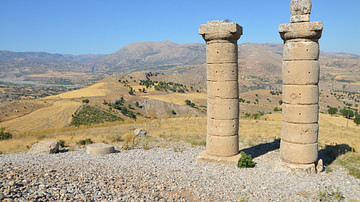
Image
Tumulus of Karakus with Distant Views of Mount Nemrut
The eastern side of the Tumulus of Karakus with two columns still standing upright. One column has traces of a relief, the other is decorated with an animal sculpture. The Tumulus of Karakus is a funerary monument (hierothesion) of the Commagene...
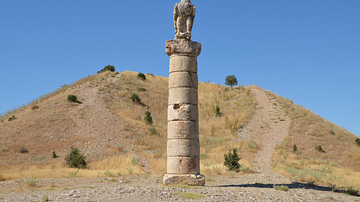
Image
Tumulus of Karakus (south side)
The Tumulus of Karakus with the eagle on top of the south column. The Tumulus of Karakus is a funerary monument (hierothesion) of the Commagene Royal Family, located in the Kahta district of Adiyaman Province in Eastern Turkey.
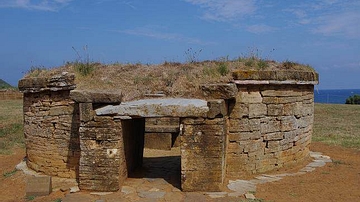
Image
Populonia Tumulus Tomb
One of three tumulus tombs with stone plinths located in the Etruscan necropolis of Populonia, Italy, 7th-4th centuries B.C.E.
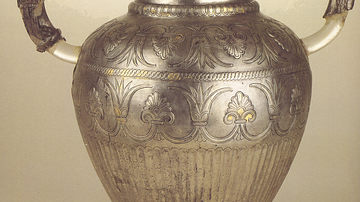
Image
Amphora-Rhyton from Kukouva Mogila Tumulus, National Archaeological Institute with Museum - BAS
Silver-gilt amphora-rhyton from Kukouva Mogila tumulus, Duvanlii. Early 5th century BCE. National Archaeological Institute with Museum - BAS. Photo: Nikolay Genov in catalogue of the exhibition Los Tracios. Tesoros enigmáticos de Bulgaria...
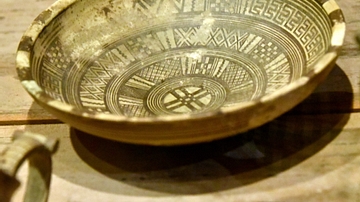
Image
Bowl from Gordion, Tumulus K III
Bowl from "Tumulus K.III" at Gordion (Gordium), in modern-day Turkey. Mid-8th century to early 7th century BCE. (Museum of Archaeology, Istanbul, Turkey).
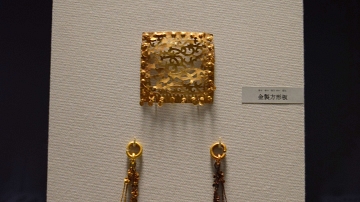
Image
Jewels from Niizawa Senzuka Tumulus
These golden jewels come from the Niizama Senzuka No. 126 Tumulus, which is located in Kawanishicho, Nara prefecture, Japan. They date the 5th century CE, during the Kofun period. (Tokyo National Museum)
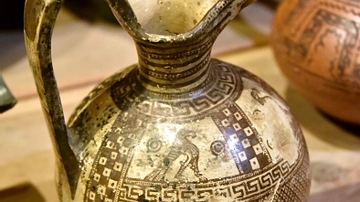
Image
Jug from Gordion, Tumulus K III
Single-handed spouted jug from "Tumulus K.III" at Gordion (Gordium), in modern-day Turkey. Mid-8th century to early 7th century BCE. (Museum of Archaeology, Istanbul, Turkey).
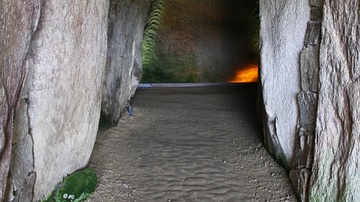
Image
Neolithic Tumulus Interior, Locmariaquer
The interior chamber of the stone burial mound known as the Table-des-Marchands (Table of Merchants) at the Neolithic site of Locmariaquer in north-west France. The tomb was constructed in the 5th millennium BCE and is so called because of...
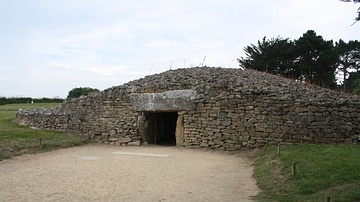
Image
Table-des-Marchands Tumulus, Locmariaquer
The stone burial mound known as the Table-des-Marchands (Table of Merchants) at the Neolithic site of Locmariaquer in north-west France. The tomb was constructed in the 5th millennium BCE and is so called because of the large flat stone which...